
Vodorosl
-
Posts
38 -
Joined
-
Last visited
Content Type
Profiles
Forums
Blogs
Gallery
Events
Store
Posts posted by Vodorosl
-
-
I would recognize that narcisistic, self-indulgent and demeening tone anywhere. It was so good not to speak with you for a couple of years, hope I will never have to converse with you again.
 0
0 -
Aceton, don't want to start a argument, but if you would have bothered to go back and read through the whole thread, you would have seen that I've been in this thread before you joined this forum.
0 -
Aceton, I'm interested in seeing your fund, but you're unable to accept PM's, can you send me your email address.
Thanks
0 -
Very interesting. I can't read anything from the washed out contrast of the text, but very interesting idneed that these are printed off on postcard format just like regular "first print" wartime snapshots, but with "reproduction forbidden" in FRENCH (!) as if they'd been submitted as proofs--and written on back in German.
They were taken at the same place but I'd say different times--
1) the Kaiser is in German uniform (note Bahnhofswache gorget being worn by Guards infantry Gefreiter at left)
2) The Kaiser and Emperor Karl are wearing each other's uniforms (note Uhlans wearing Bahnhofswache gorgets at right)
4) The Kaiser is in the car with (I think) King Ludwig III of Bavaria. Might be Wilhelm II of W?rttemberg-- too distant to tell for me.
VERY unusual.

Rick, thanks for the response. I also wanted to show this 5th photograph. This is the one most interesting to me, Ukrainian leader is with Hindenburg and the same officer as in the first picture. I was trying to figure out if the first four photographs have something to do with the last one. It looks like it's the same railroad station (Spa?) but there's no Kaiser present. Correct me If I'm wrong the Ukrainian leader would not visit Kaiser on the same day as Karl would - right?
P.S. Rick what does "...Bahnhofswache gorget being worn by Guards infantry Gefreiter at left... signify?
P.P.S Rick, inscription on the back is in English.
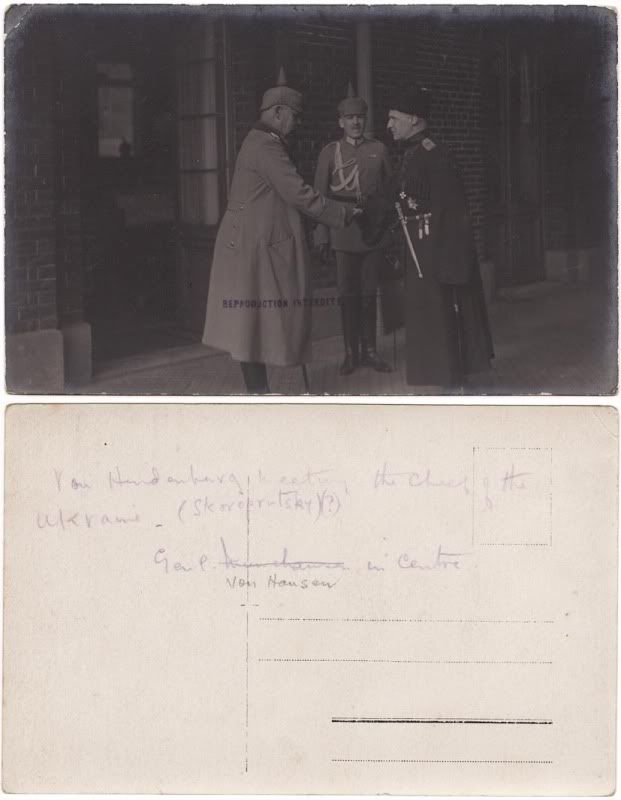 0
0 -
Good morning gentlemen!
To me these look like a series of the photographs, all taken on the same day, what do you guys think? It looks like it's the arrival of the Austrian Emperor to Kaiser's HQ at Spa, Belgium.
Thanks in advance



 0
0 -
Thanks for everyone's input. One last question, is the size of the insignia 30 mm?
Thanks
0 -
vodorosl,
There are several sources for the information that you seek. The 1999 two volume set of books from J?rgen Kraus has plates that show both the shoulder strap cyphers and the specialty shoulder strap devices (like the one you have shown and many others). These books are currently unavailable, but are supposed to be reprinted at some point. The regimental cyphers are shown in the "Handbook of the German Army" reprints, the Jan Kube books, Das Deutsche Heer, F?hrer durch Heer und Fl?tte and the various Ruhl uniform plates, some of which have been reprinted and are carried in stock by several militaria dealers. Finally, if you are interested, I can send you scans from any of the aforementioned books.
Regards,
Chip
PS Your ?skulapstab insignia looks to be from the pre-1918 era.
Chip, thank you for your response. If it's not too much trouble can you sent me a scan from any book that shows the specialty shoulder strap devices. I would greatly appreciate it - I sent you my email as a PM.
0 -
Dear all, does this look like an imperial insignia or is this a latter one? Also can someone point me in the right direction of finding pictures/photos of german imperial board insignia?
Thanks in advance
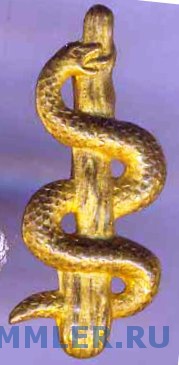 0
0 -
Rick, thanks for the help. Hats like that with the long piece of cloth called shlyk were widely used during the ukrainian civil war. Regarding the scanner, you're absolutely correct - sorry for the quality, here's a darker version which might be easier to read.
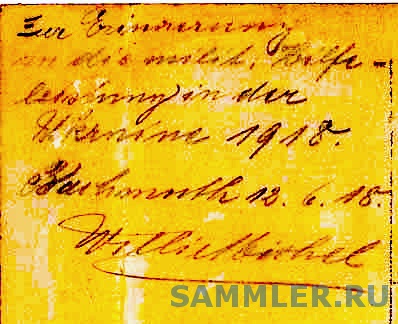 0
0 -
Good day, forumians!
I obtained this picture that I thought shows a German soldier in the middle and two ukrainian soldiers on the sides. I was told that the two soldiers on the sides are dressed in everything german except for the hats and the russian sabres. Do they look german to you guys? Are those medal bars on their chests or could it be something else? Also another question for the photograph collectors, as I received this pic it turned out that it's glossy, I'm used to old photographs being matte, could it be a modern repro or is it possible that it's and old pic? Thanks in advance.

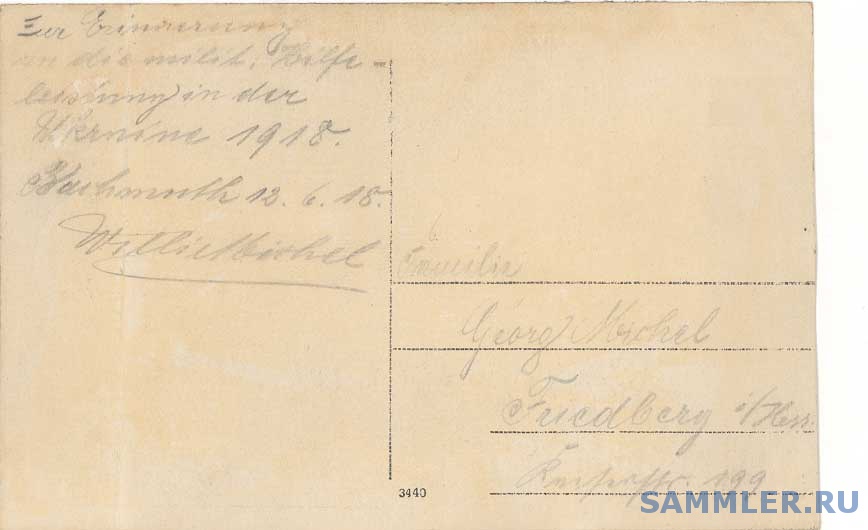 0
0 -
Good afternoon, gents!
Could you tell me if these rosettes are a part of an austro-hungarian military or civil uniform? Thanks in advance. The rosette in question on the first pic is in the middle. If I'm not mistaken, all rosettes are 15 cm x 15 cm. Thanks in advance.
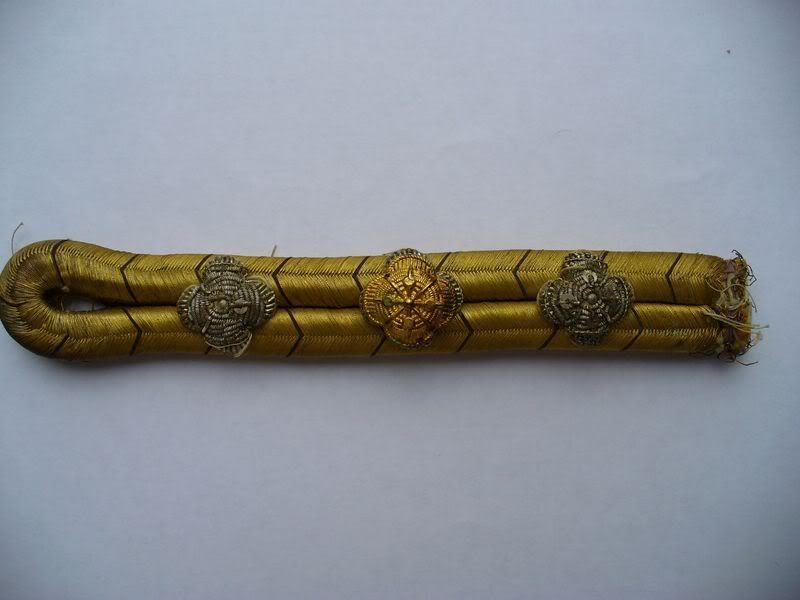

 0
0 -
Ulsterman, here's the magnified shoulder board, sorry for the delay.
 0
0 -
Rick thanks for your help.
 0
0 -
Good day, gents!
I have the photo because there's a Ukrainian soldier (I'm sure you can figure out which one) pictured here. Based on his cocade it was deducted that the time period is autumn/summer 1918, when the cocades were used and then ruler of Ukraine Hetman Skoropadsky allied Ukraine with Germany. My question to the experts is, based on the German uniform is it possible to pinpoint the time period more closely.
Thanks in advance.
 0
0 -
I've rarely seen Soviet boards that much up to anything like Imperial quality stuff. Lets be honest, the Soviets weren't big on fancy dress, I think much of the price bump in Russian items of late is due to collectors looks for a nice asctetic who end up paying too much for Imperial items.
I've only got one set of these boards, and they're beautufil. I've also got a strange set which looks to be Imperial Russian but I don't beleive to be a shoulder board. Anyway, back to the point, I have a few Soviet general's items and I've felt even low-ranking Imperial items seem to be of much higher quality.
And a most impressive collection!!!!
~TS
Allen, can you show us your imperial board, I'm sure everyone would love to see them - thanks
0 -
Chik, it turned out - the board on the left never existed (the german book got it wrong), it was suppose to be white, red and blue piping, there was never a black and white, thanks for your help though.
0 -
Wow Chip and George, I was hoping that I was wrong - thank you very much for your help.
0 -
Chip, there was no black and white piping in tsarist army
0 -
 Those are certainly SOME kind of Russian straps, but ZERO clue what black and white Prussian 1 Year Volunteer typepiping is doing on there.. I will move this into the Tsarist section.
Those are certainly SOME kind of Russian straps, but ZERO clue what black and white Prussian 1 Year Volunteer typepiping is doing on there.. I will move this into the Tsarist section.That's the thing, there was no black and white piping in the tsarist army and if you look at the back, the orange color was never present.
0 -
Gentlemen and Ladies(?)!
Without the Russian button, could this be a prussian shoulderboard?
Thanks in advance

 0
0 -
Chip, for some reason I thought that the junior officers' boards were very similar, but I guess they weren't as long as these pictured
0 -
Rick, thank you for the response. Just to clarify, did you mean there are no boards that physically resemble Ukrainian boards or there are no boards with blue and yellow stitch intertwined? Thanks
0 -
Here's a painting of those boards:

 0
0 -
Good day to you, forumians!
This is going to sound odd, but here goes... During the civil war in Ukraine in 1918, a hetman (ruler) Skoropadsky was brought to the power by a German highcommand, he inturn copied some of the German regalia, including shoulderboards, pips, branch insignia. Now on the attached pic, we can see that the junior officer's boards (leftmost) were very similar if not exactly the same as the German boards, the senior officers (middle) and generals (right) were similar but not exactly the same as german boards of the comparable ranks. Let's get back to the junior officers, they were created with the interchanging/intertwining blue and yellow thread (the Ukrainian colors), now three lines later, my question... I know different thread combinations on the boards signified different branches as well as different locations of the wearer, were there infact German junior officer boards during WWI that did have blue and yellow alternating threads? Here's why I'm curious, Ukrainian boards are very rare and if I happen upon a German-looking board with blue and yellow threads, can I be sure it's not German i.e. German army never used that combo, or on the other hand they did and there's a possibility that the hypothetic board is not Ukrainian. Thanks in advance, hopefully the question is more or less clear.
 0
0


1918 Photo with cocade
in Germany: Imperial Uniforms, Headwear, Insignia & Personal Equipment
Posted
Hello,
The inscription on the photo reads "Russian diver in Sevastopol. Sept 13. 1918" The man that's helping to lower the diver does he have a german cocade? Should he have two cocades, like the others in the background?
Thank you.